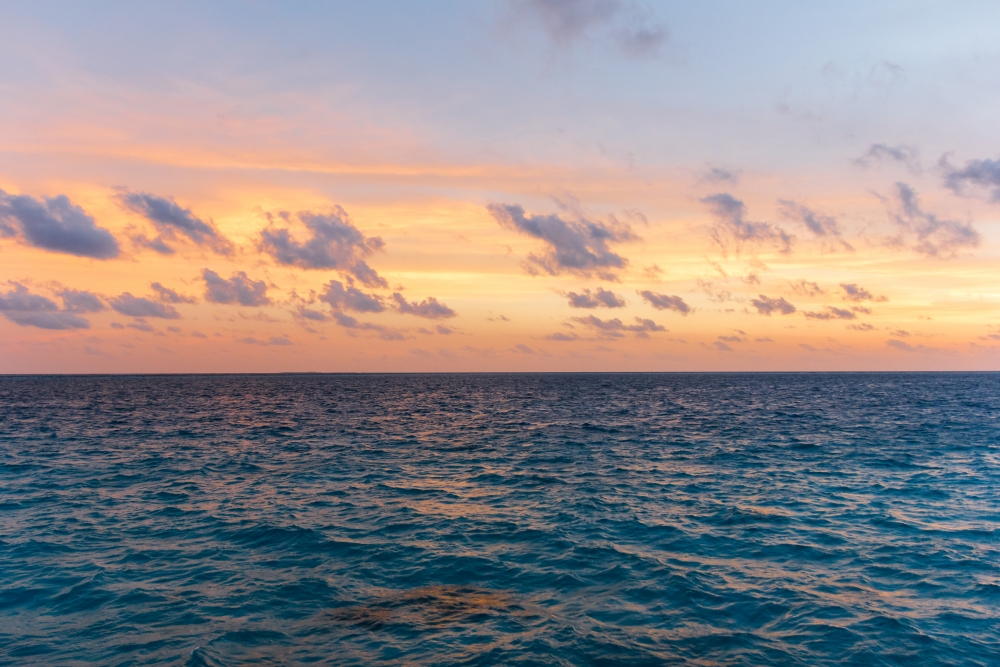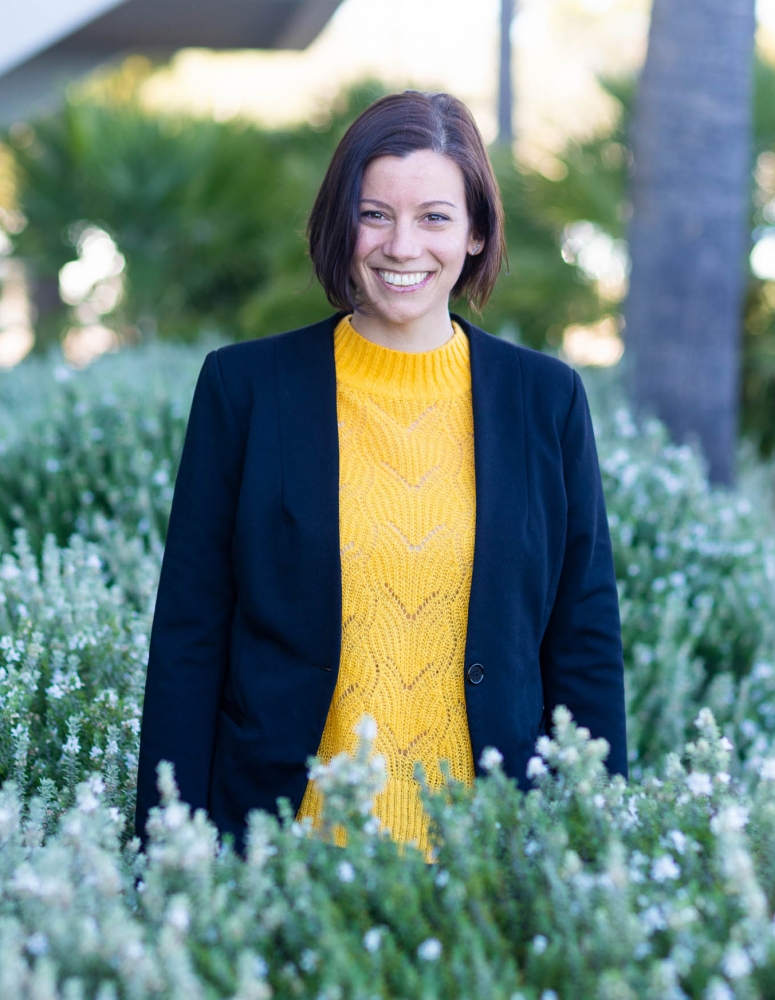
Cryptic Carbon Sequestration

The ocean is our biggest ally when it comes to regulating atmospheric CO2 levels. As the Earth’s largest carbon sink, it sequesters roughly 10 petagrams per year. But as atmospheric carbon emissions continue to rise and the planet continues to warm, how will the ocean respond?
That’s one of the biggest questions facing Earth scientists today. The ocean is a complex system, with mechanisms that absorb, circulate, sequester and also release CO2, depending on the conditions. Understanding these interlinked processes can give researchers a better idea of what to expect as the climate changes
Among these scientists is UC Santa Barbara geochemist and geobiologist Morgan Raven, who, thanks to a Faculty Early CAREER award from the National Science Foundation, is set to explore a lesser-known mechanism of ocean carbon sequestration — one that might become more conspicuous as the oceans warm.
“I’m really excited about this,” said Raven, an assistant professor in the Department of Earth Science. “The award allows us to investigate the scale and significance of particle-hosted sulfurization and its impacts on sedimentary carbon burial for the first time. And, it supports the development of a more accessible and inclusive research training program for undergrads in Earth Science, including opportunities for fieldwork at sea.”
“I congratulate Morgan Raven on receiving this esteemed award,” said Pierre Wiltzius, dean of Mathematical, Life and Physical Sciences at UCSB. “This funding will contribute to the important research she is doing on carbon in our oceans, ultimately helping us to better understand the effects of climate change. Morgan is a shining example of the high-quality junior faculty we have on this campus.”
A New Ancient Process
Carbon sequestration in modern, oxygen-rich oceans is a choreography of physical, biological and gravitational processes. Most of it occurs as a result of the ‘biological pump’ — tiny phytoplankton at the ocean’s surface take in carbon dioxide in the air and dissolved carbon in the water to photosynthesize and to make their shells. They then get eaten by zooplankton which, if they don’t in turn get consumed by larger animals first, conduct a massive migration to the deep ocean where they deposit organic carbon and respire carbon dioxide before returning to the ocean’s surface the next night to repeat the journey.
That process, however, doesn’t explain the abundance of carbon in the sediments at the bottom of ocean anoxic zones, regions of the ocean where there isn’t enough oxygen to sustain zooplankton or any other animal. In recent years Raven and colleagues have discovered that another mechanism was at play. Large particles — sticky blobs of organic matter such as dead phytoplankton, fecal matter and other small organisms — host microenvironments where interesting process can occur, including microbial sulfur cycling, a process that impacts the carbon cycle.
“The inside of the particle can be chemically different from the outside,” Raven explained. In some situations, she continued, these pockets can host and protect microbes whose metabolic processes generate sulfides, which are of particular interest to Raven and her colleagues, oceanographers Richard Keil at University of Washington and José Carriquiry at the Autonomous University of Baja California, as well as UCSB doctoral student Molly Crotteau.
“I’m particularly interested in how sulfides can effectively pickle organic matter,” she said. “So if you get a little bit of sulfide in the middle of these particles, you can change the carbon in those particles to a form that’s more likely to survive on these geologic time scales, more likely to make it all the way to the mud in the first place.” In oxygen-rich zones, thanks to zooplankton and other animals, organic carbon often becomes CO2 gas again as a result of eating and respiring. But in these oxygen-free zones, pickled organic particles are far away from animals and protected from enzymes and other substances that may break them down as they drift ever so slowly to the floor.
The process is actually an ancient one — it was much more widespread 145.5 – 65.5 million years ago during the Cretaceous period, when oceans were warmer and therefore had less oxygen, especially at depth. Low-oxygen conditions led to the buildup of organic matter on the anoxic sea floor, deposits we now call black shale.
As the ocean warms, it will hold less oxygen, which has major implications for the biological pump. Anoxic ocean zones will continue to grow, which in turn could make this pickling process more prevalent. Raven and her team are interested in understanding this cryptic process in greater detail.
“We want to know in finer detail how much carbon gets preserved on the sea floor, and how significant it is,” Raven said. “And how other factors will come into play, such as ocean temperatures, circulation and storms.”
A Lab at Sea
Through a set of ocean expeditions to the Eastern Tropical North Pacific (ETNP) oxygen deficient zone — a naturally occurring low-oxygen zone off the coast of Mexico in the Pacific Ocean — and some custom-built particle traps, Raven’s team plans to collect particles floating down to the seafloor. Just getting the particles is in itself a feat.
“The limiting part has always been getting the sinking particles,” she said. “They’re diffuse and mixed and heterogenous — sometimes there are a lot and sometimes there aren’t any.” Their setup will allow them to not only get a sense of how many particles are floating around, but also to capture interesting ones for measurement and experimentation without deforming them. Other experiments will involve coring seafloor samples.
“We want to connect what’s happening in the water column to what actually gets in the mud,” said Raven, who plans to use part of her grant to start an undergraduate research and training class to help students gain the special skills needed to participate in oceanic research expeditions. Undergrads will also be a large part of the field work, she said. The first expeditions are expected to take place in 2023 or 2024.
“It’s exciting to be able to put together a deployment team that will be really closely involved in the project,” she said. Were it not for the generosity and a chance message from an emeritus colleague, she added, this opportunity of a lifetime may never have materialized.
“The preliminary studies only happened because the crew at University of Washington basically invited me to come along,” she recalled. Funding to study such a rare and arcane process in the ocean had been scarce and she was ready to abandon the project, until UW oceanography professor Allen Devol sent the fateful note.
“I was sitting on the floor of the Burbank airport and he was like, ‘Hey you wanna come on a ship in a few months?' And all of this became possible because of that.”



